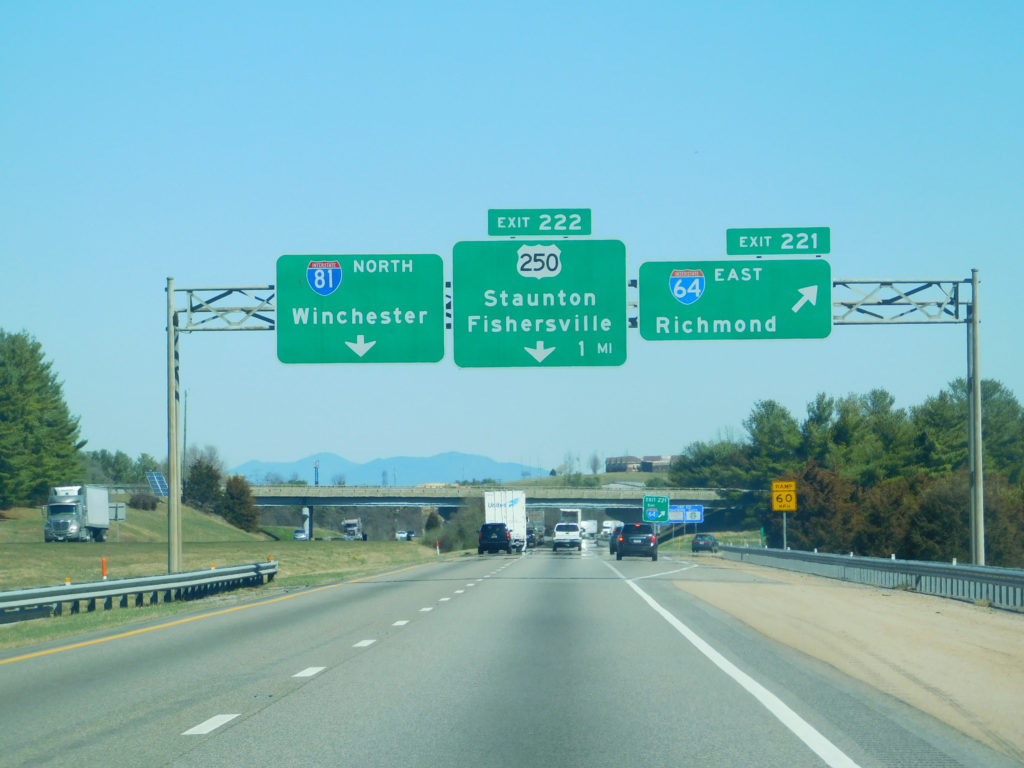A Republican-led initiative to improve the 325-mile-long Interstate 81 corridor in the western portion of the Commonwealth will be one of the major topics discussed in this year’s 45-day General Assembly session in Richmond beginning today at noon. Although the bipartisan measure is backed by Governor Ralph Northam (D), one thing that must be decided is how to pay for the $2.2 billion in proposed improvements, which could be a contentious topic.
The legislation is patroned by lawmakers with the big rig-heavy highway in their districts: Senator Mark Obenshain (R-Harrisonburg) Senator Bill Carrico (R-Galax), Delegate Steve Landes (R-Weyers Cave), and Delegate Terry Austin (R-Buchanan).
With over 12 million trucks traveling along the I-81 corridor each year, Carrico told the Bristol Herald-Courier that the interstate is a “crucial resource for the region and its residents,” especially in such a rural area where other economic development programs have worked to bolster Southwest Virginia.
The Interstate 81 Corridor Improvement Fund, passed by the Commonwealth Transportation Board (CTB) in November and headed by the Virginia Department of Transportation (VDOT), will be supported by tolls, a news release from the governor’s office states. Moreover, “the proposal would establish limits on toll rates and give automobiles and small trucks the ability to purchase an annual pass allowing unlimited use of I-81 for a fixed yearly fee.”
Toll rates were not specified in Governor Northam’s news release, but state highway officials have previously suggested between five and 15 cents a mile depending on the vehicle type and hour of day or night, but the Richmond Times-Dispatch reports that a toll rate up to 17 cents per mile could be possible. Furthermore, state officials have previously estimated that an annual toll fee for local travelers could cost around $30.
“No proposal as of yet has a number associated with what the tolls should be,” Delegate Chris Collins (R-Frederick County) said in a report from The Winchester Star. “It’s very much a work in progress.”
Another Northern Shenandoah Valley legislator, Delegate Dave LaRock (R-Hamilton), explained that the state “would likely place six tolls along I-81— one at each entry point into Virginia and four in between separated by about 60 miles each,” in between the northern terminus in Clear Brook at the West Virginia border and the southern terminus in Bristol at the Tennessee border.
Other funding proposals that have been discussed to improve I-81 have included a 0.7 percent increase in the state retail sales and use tax and a 2.1 percent increase in regional gas and diesel-only taxes. Deputy Secretary of Transportation Nick Donohue has said the annual revenue from tolling on the truck-heavy corridor is estimated to bring in around $135 million. Moreover, a regional fuels tax increase of 2.1 percent could generate $60 million a year, and a 0.7 percent increase in retail sales and use taxes would generate approximately $105 million a year.
“Everything is on the table right now,” the governor said, according to The Roanoke Times. “I would say the consensus is to go more with tolls than taxes.”
VDOT has remarked that if tolls are selected as the funding method, it would recommend six overhead scanners in each direction, at least 40 miles apart between urbanized areas and near the junctions of other interstates. Implementing the tolling program is currently estimated to cost $43 million.
The state transportation officials that studied the I-81 corridor originally identified 105 “immediate” projects with an estimated price tag of $4.25 billion. However, due to funding challenges, the state is focusing on just 72.
While Virginia looks to begin upgrading I-81 within the next few years, they claim the best hope is to fund all immediate projects by 2060, over four decades from now as, according to VDOT, some interstate projects would cost an estimated 10 to 15 million dollars for every mile of pavement.

